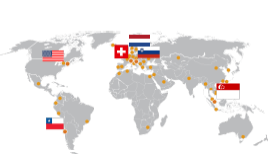Multiple models are available for the calculation of joint angles, moments and powers during walking, including Plug-in-Gait (PiG), the calibrated anatomical system technique (CAST), the Gait2391 model in OpenSim, and the Motek Human Body Model (HBM). The advantage of HBM is that it was developed specifically to allow for real-time calculation of the joint kinematics and kinetics. This makes it suitable for real-time measurement and feedback, extending the potential application of the model from analysis to training.[1] An important question is, how do the outcomes of the Motek HBM compare with more conventional models?
While this has already been investigated in healthy young adults,[2] Flux et al. (2020) addressed this question in children with cerebral palsy.[3] In this recent study, gait analysis was performed in 25 children and the resulting kinematic data were analyzed using three different models; PiG, CAST and HBM. Although patterns were similar, significant differences were found between all three models.
In the sagittal plane (flexion/extension) there were no clinically relevant differences. All differences were below the threshold of 5°, except a systematic offset towards plantar flexion in the CAST model, which is easily explainable and can be corrected for. In the frontal and transverse plane, however, larger and clinically relevant differences were found between all models. Overall, the difference between the two conventional models (PiG and CAST) were larger than between HBM and the conventional models. It remains unclear which is the gold standard model; this would require comparison with gait data calculated from fluoroscopic measurements or measurements of markers secured to the bone with bone pins. Given the ethical concerns with both of these methods, a pragmatic approach to gait analysis must be adopted.
The authors conclude that the models are equivalent for sagittal plane kinematics, but not for the frontal and transverse plane. Particularly when comparing measurements in these planes (pre-post intervention or against a reference) it is therefore important to use the same model. These findings indicate that HBM can be used as well as the conventional models for kinematic gait analysis.
Check out the full article here: Flux E et al (2020) Human Movement Science
References
[1] Van Den Bogert AJ, Geijtenbeek T, Even-Zohar O, Steenbrink F, Hardin EC. A real-time system for biomechanical analysis of human movement and muscle function.Med Biol Eng Comput. 2013;51(10):1069-1077. doi:10.1007/s11517-013-1076-z
[2] Falisse A, Van Rossom S, Gijsbers J, et al. OpenSim Versus Human Body Model: A Comparison Study for the Lower Limbs During Gait.J Appl Biomech. 2018;34(6):496-502. doi:10.1123/jab.2017-0156
[3] Flux E, van der Krogt MM, Cappa P, Petrarca M, Desloovere K, Harlaar J. The Human Body Model versus conventional gait models for kinematic gait analysis in children with cerebral palsy.Hum Mov Sci. 2020;70:102585. doi:10.1016/j.humov.2020.102585


